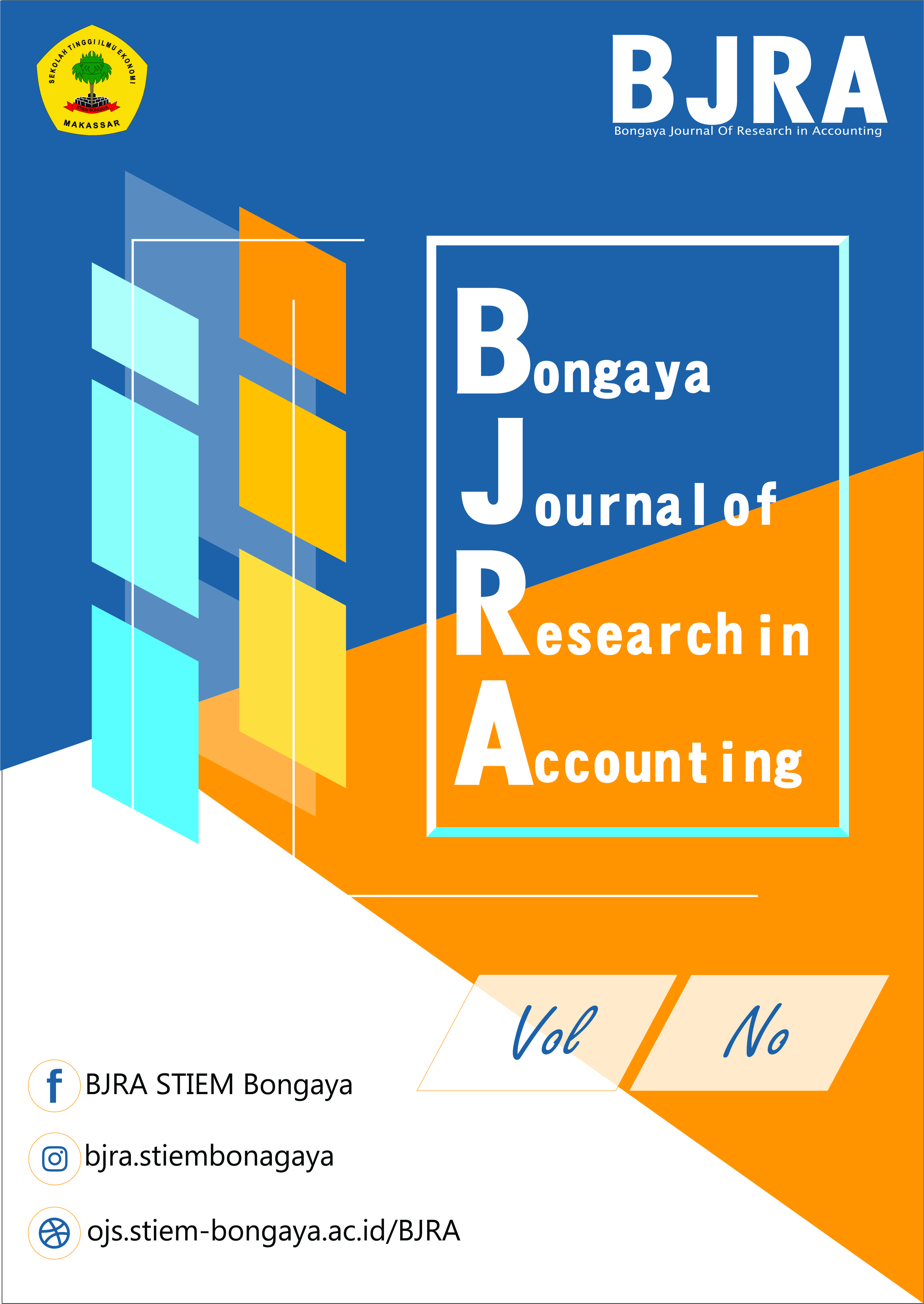PENERAPAN ELEKTRONIK MONITORING PELAKSANAAN ANGGARAN (E-MPA) DALAM MENINGKATKAN AKUNTABILITAS PELAPORAN KEUANGAN PADA KEMENTERIAN AGAMA PROVINSI SULAWESI SELATAN
DOI:
https://doi.org/10.37888/bjra.v3i1.212Keywords:
Electronic Budget Implementation Monitoring (e-MPA), AccountabilityAbstract
Implementation of Electronic Budget Implementation Monitoring (e-MPA) in Improving Financial Reporting Accountability at the Ministry of Religion of South Sulawesi Province. This study aims to determine the role of the application of e-MPA in increasing accountability at the Office of the Ministry of Religion of South Sulawesi Province.This type of research is this type of research is a qualitative research in the interpretive paradigm with an empirical phenomenological approach. The research subjects were 3 informants namely PPK, e-MPA operators and accounting staff. Data collection techniques namely from interviews, documentation and data analysis.The results of this study indicate that the role of e-MPA as an accounting information system that integrates the process of data collection, planning, implementation, monitoring, controlling and evaluating the implementation of website-based programs and budgets has been applied in the Ministry of Religion of South Sulawesi Province in accordance with the provisions of PMA No. 74 of 2014 and the e-MPA system are also able to increase accountability because the e-MPA is very helpful in providing financial information in a timely, complete, accurate and reliable manner.










